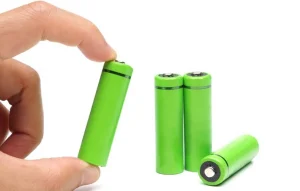The top four methods for recycling lithium-ion batteries are Pyrometallurgy, which uses high temperatures to recover metals; Hydrometallurgy, leveraging chemical solutions to dissolve and reclaim metals; Electrohydrometallurgy, combining electricity and chemistry for efficient metal recovery; and Direct Cathode Recycling, focusing on directly refurbishing used cathode materials to near-original condition. Each method varies in efficiency, cost, and environmental impact.
Pyrometallurgy
Pyrometallurgy Explained
Picture this: an enormous, 1400°C furnace belching flames to scorch used lithium-ion batteries until they yield up pools of useful metal. Pyrometallurgy might be the phoenix process for batteries – ensuring that venerable materials can rise anew. These aren’t your ordinary furnaces — they’re electric arc furnaces, based on those used in the mining industry to smelt ores.
The Process in Detail
But how do we go from a used battery to recuperated metals? The batteries are first dismantled, with plastics and casings removed. Once done, The core materials are introduced to the furnace. Nickel, cobalt, and copper collect in a matte layer while the less valuable components form slag as the heat causes metal elements to separate.
Products and Specifications
I bet you are curious what they would produce out of these ovens The product is a matte, composed of as much as 40% nickel, 20% cobalt and another 10% copper that can be sold onsite to metal refiners who process the material into high-purity metals for use in new batteries or other applications.
Environmental Considerations
Pyrometallurgy, for all its benefits, is not without issues. Granted, it is using metals that are recycled in a very energy-intensive and CO2 intensive manner. The process produces approximately 2 tonnes of CO2 for a tonne of metal made, which is not favorable to the environment friendly users.

Hydrometallurgy
Unpacking Hydrometallurgy
In other words, if you can imagine your high school chemistry class but for lithium-ion batteries — that’s hydrometallurgy. They consist of solvents, typically acids that dissolve the valuable metals batteries contain. This is no DIY backyard experiment – this stuff happens in industrial vats, and under carefully regulated conditions as the metals dissolve.
Step-by-Step Process
The battery is first stripped of its metals. You’re not tearing shit up from the outside; it’s most akin to running a chemical strip-down through an extreme cleaning solution. Cobalt, lithium and nickel are leached into a solution containing metals. Think about it as brewing tea, only instead of using leaves to steep in hot water, you’re leaching metals from battery waste.
Electrohydrometallurgy
What Is Electrohydrometallurgy
Now think for a moment about what it looks like to start plugging the future of recycling into sci-fi novel-like technology. Electrohydrometallurgy is a marriage of the al nature of hydrometallurgy with no less wizardry than electric currents to pull metals out from a solution like rabbits from hat. Not only a process however, but also an alternative way to harness electricity for more efficient and environmentally friendly metal recovery
The Process Breakdown
This is where the magic happens: like with conventional hydrometallurgy, metal from spent lithium-ion batteries are first dissolved in solution as a liquid. We take them up in the presence of metals and bam. Metals start depositing on electrodes! If you combine cobalt, nickel or lithium in a battery, they dont just sit there; instead,. each ‘wants’ to jump over their respective electrodes by virtue of electrochemical principles, and so separate out.
Sample Output and Specifications
What comes out of this? You get highly pure metals. That equates to purity levels suitable for the production of new batteries. An example could be to recover lithium to better than 99% purity suitable for the exacting standards of battery manufacturers.
Addressing the Technicalities
Some technical in a bit. Electrohydrometallurgy is not as simple as plug-and-play. Controlling the electrical parameters that are essential to drive and direct the recovery efficiency of its process demands sophisticated instrumentation coupled with experience. Features such as voltage and current control can be used to maximize the rate at which metal is deposited, without damaging the metals being extracted.

Direct cathode recycling
Direct Cathode Recycling Patterns
Picture this: Instead of pulverizing a lithium-ion battery into its individual elements, we recondition the cathode material itself. This would be kind of like breathing new life into these batteries without an entire teardown, if you will. After all, direct cathode recycling bypasses the metal recovery phase and goes right to freshening up the cathode materials. You are essentially giving these cathodes the equivalent of a rejuvenating spa day to get them ready for reuse in new batteries.
The Nuts and Bolts of the Process
The way it works is this: spent batteries first are dismantled, and the cathode materials — usually a blend of lithium, nickel, manganese and cobalt — are meticulously removed. But this is no ordinary scoop; it takes a very carefully calibrated instrument to select out the correct material without contamination. The extracted cathodes are then processed, typically through chemical or thermal processing to return their performance and capacity close to its original state.
What Comes Out
Cathode sheets + processing can hold nearly the charge as when first made These are not downgraded, recycled materials — they have been renewed and reenergized to become power your next smart phone or electric car.
Efficiency and Innovation
Well first, we can say numbers The recycling of cathodes via direct methods might allow for the reclamation of up to 95% efficiency into original battery material. On that same note, this is not only an act of environmental consciousness but also economically smart. When you avoid pulling metal out of ores, the energy and processing time savings are massive.
